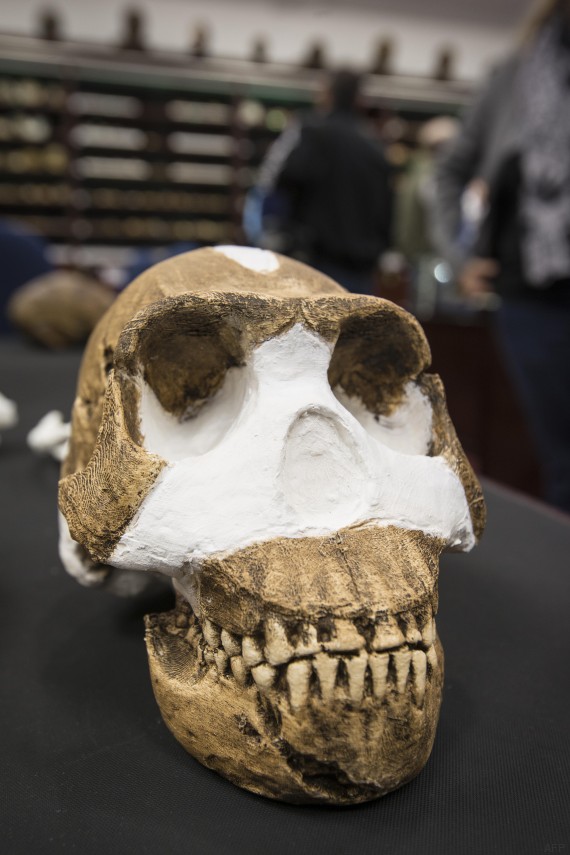SCIENCE - A discovery of size. An ancient human species that was previously unknown was found in a cave in South Africa where the bones of 15 hominids were exhumed, international researchers announced Thursday (September 10th).
The fossils were found in a deep cave and extremely difficult to access, near Johannesburg, on the very rich archaeological site known as the "Cradle of Humankind" and a UNESCO World Heritage Site. "I am delighted to introduce a new species of humankind," said Lee Berger, a researcher at the University of the Witwatersrand in Johannesburg, at a press conference in Maropeng, site of the "Cradle of Humankind".
. .jpg)
In 2013 and 2014, scientists exhumed more than 1,550 bones from at least 15 individuals, including babies, young adults and older people. All have a homogeneous morphology but have not been dated yet. The new species was named Homo naledi and classified in the genus Homo, to which belongs the modern man. The Natural History Museum in London has described this major discovery as "remarkable".
"Some aspects of Homo naledi, like his hands, wrists and feet, are very close to those of modern man, while his little brain and the shape of the upper part of his body are more close to a pre-human group called Australopithecus, "said Professor Chris Stringer of the Natural History Museum of London,
.jpg)
What did Homo Naledi look like? "He had a tiny brain the size of an orange and a very slender body," said John Hawks, a researcher at the University of Wisconsin-Madison, who also contributed to the article in eLife magazine . He measured an average of 1.5 meters and weighed 45 kilos.
His hands "suggest that he had the ability to handle tools", his fingers were extremely curved, while "it is almost impossible to distinguish his feet from those of a modern man", says a joint statement of the University of Wits, the National Geographic Society and the South African Department of Science published in South Africa.
"His feet and long legs suggest he was made to walk a long time".
homo naledi
.jpg)
The exhumed bones in South Africa pose a challenge for researchers. They complicate a little more the table of hominids, because the discovered species presents at the same time characteristics peculiar to the modern and old hominids.
This discovery could thus help to learn more about the transition, approximately 2 million years ago, between the primitive Australopithecus and the primate of the homo genus, our direct ancestor.
https://twitter.com/eNCA/status/641902590251433984/photo/1
"The blend of characteristics of Homo naledi once again underlines the complexity of the human genealogical tree and the need for further research to understand the history and ultimate origins of our species," says Chris Stringer.
The researchers also wondered why the bones were in this difficult-to-access room at the entrance to an already-known cave. The tunnel to access is extremely steep and so narrow that only researchers with small morphology have managed to get to the scene of this major discovery. This room "has always been isolated from other rooms and has never been in contact with the surface," the statement said.
homo naledi
.jpg)
"We've come up with several scenarios, including the possibility of an unknown carnivore attack, accidental death, or a trap," said Lee Berger of the University of the Witwatersrand. more plausible was that these bodies had been voluntarily deposited there. " A practice that "demonstrates a surprisingly complex behavior for a 'primitive' human species," Professor Stringer concludes.
For years, the "Cradle of Humankind", an area riddled with pre-human caves and fossils and a veritable mine of information about our ancestors, is a treasure trove for archaeologists and paleontologists. And Lee Berger assures: the room where Homo naledi was found "has not yet revealed all its secrets, because there could be hundreds, even thousands of Homo naledi fossils to exhume".

Homo naledi —Has both phenotypic and genotypic relationship with Donald Trump.
.jpg)